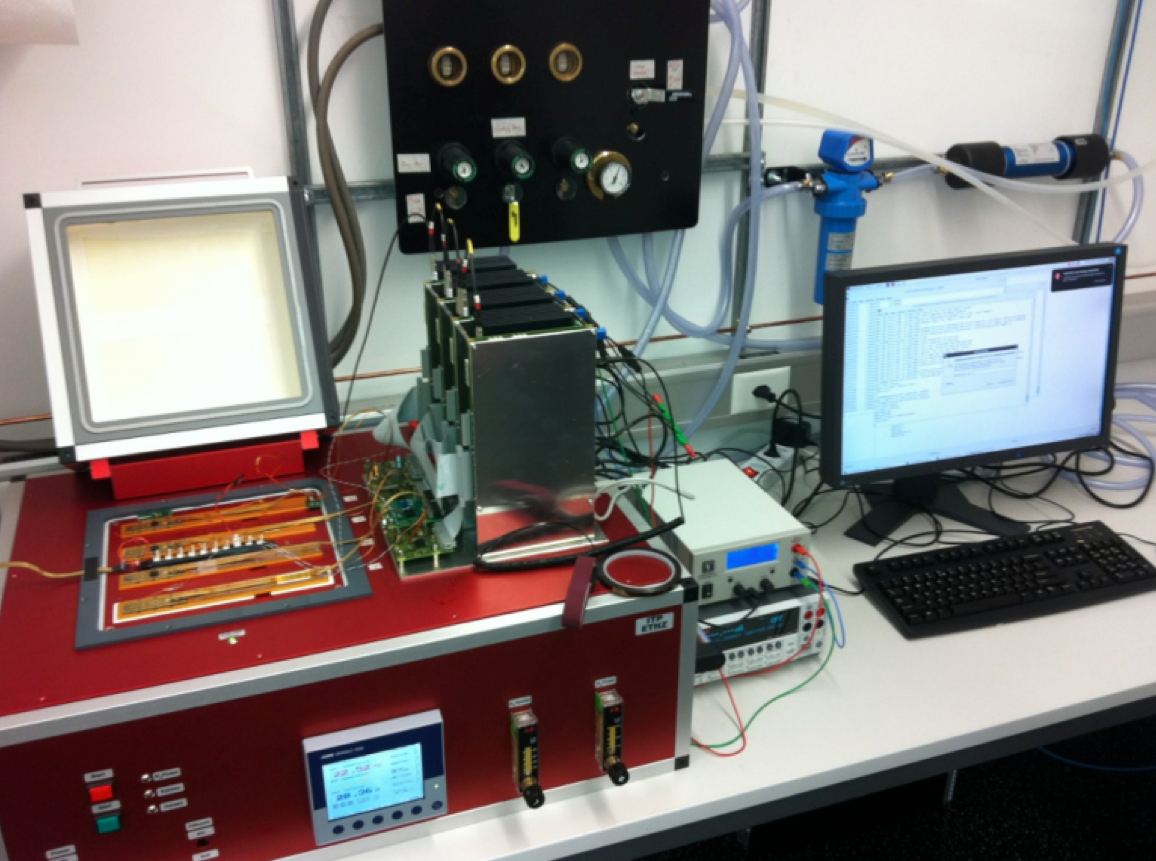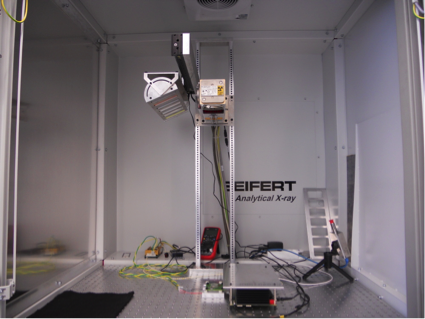CMS silicon R&D and detector operations
Members of the group have been actively involved in the operation of the CMS pixel detector. The original CMS Pixel detector has been replaced by a new, four layer pixel detector in 2017, the 'Phase-1' detector. The group has made large contributions to the testing, construction and commissioning of this detector, and will support its operation and maintenance until the planned LHC shutdown in 2025. Within the operation we contribute mostly in running and calibrating the detector. Because the properties of the detector – such as its noise performance – depend on the temperature and the received irradiation dose, settings of the pixel front-end electronics need to be adjusted during the operation of CMS detector. This effort is complemented by detailed studies of these effects in the lab at ETH, which provide the needed information for the adjustments in the detector. The group also provide person power to cover 'detector-on-call' (DOC) expert shifts.
After the LHC upgrade in the 2025–2027 shutdown a completely new tracking system has to be installed inside the CMS experiment, because the instantaneous luminosity of the collider will reach above 5 x 1034Hz/cm2. This upgrade is usually referred to as 'CMS Phase-2 Upgrade'. This luminosity is achieved at the cost of running with up to 200 proton-proton collisions per bunch crossing. As a result the charged particle flux in the CMS pixel detector will be as high as 3.5GHz/cm2. No current pixel detector technology is able to operate under these conditions neither in terms of 'on-detector' data processing nor in radiation hardness. The CMS collaboration has been developing together with the ATLAS collaboration a completely new pixel readout-chip in a modern 65nm feature size technology able to operate in the CMS Phase-2 environment. The silicon pixel sensors are developed by the CMS collaboration and a variety of technologies are being evaluated with promising results. Our group is actively developing a novel planar silicon sensor technology which is under evaluation for the CMS Phase-2 pixel detector. We contribute in particular to the characterization of the sensors including measurements in our Xray setup and in test beam experiments on various beam lines.
Modules are constructed out of the sensors and readout chips. Our group is leading the design and the construction of the pixel modules and makes strong contributions to the detector system design and powering aspects. For the modules, we have been designing and testing the fine-pitch and lightweight High Density Interconnect (HDI) circuitry that connects the readout chips and sensor to the services, and developing the assembly procedures. The group leads the module prototyping in the CMS collaboration and we will produce a large fraction of the modules in the clean room at ETH during the detector construction phase.
Module design details are closely related to detector system design aspects such as electrical and thermal management and the powering concept. The ATLAS and CMS Phase-2 pixel detectors will for the first time use a serial powering concept, which improves the power efficiency significantly. We operate system test stands where we test the modules under realistic environmental conditions and frequently give feedback to the design of the detector system based on our findings.


